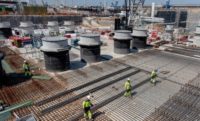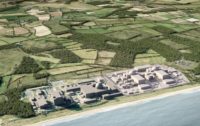The U.K. government on Sept. 15 finally approved the $24-billion Hinkley Point C nuclear power plant, which will be financed and built by state-controlled French and Chinese companies. The deal opens the door to China to own and build the Bradwell B plant using its own reactor design.
Paris-based EDF Energy controls two-thirds of the 3,300-MW Hinckley PWR project in Somerset, with Beijing-based China General Nuclear Corp. holding the financial balance. The companies will finance the project, supported by various U.K. government guarantees and an agreed-upon energy price of $122 per MWh at 2012 values for the first 35 years of operations.
After years of negotiations and opposition to the scheme from various U.K. and French groups, the Hinkley deal was ready for signing this July at a champagne celebration. However, Theresa May, the new U.K. prime minister, halted the deal at the last minute and initiated a review.
The security implications of having Chinese state companies so close to critical infrastructure appear to have been the main concern of the new May administration. The deal had been structured by the administration of David Cameron, who quit after he lost the June referendum on the U.K.’s European Union membership, commonly known as Brexit.
The new agreement essentially requires EDF to secure approval from the U.K. government before selling its controlling interest in the project “prior to the completion of construction.” Other elements of the deal, including the price, remain unchanged.
Regarding future foreign-financed nuclear plants, the U.K. government will take a special share, ensuring that significant stakes cannot be sold without consent. Project developers will have to inform the Office for Nuclear Regulation of planned sales, allowing the U.K. government to “take action to protect national security as a result of a change in ownership.”
More generally, the U.K. government will review the national security implications of foreign investment in critical infrastructure.
The new U.K. announcement “marks the relaunch of nuclear in Europe,” according to Jean-Bernard Lévy, Chairman of EDF Group. “We will take the risk and responsibility to deliver Hinkley Point C,” adds Vincent de Rivaz, EDF Energy's CEO. “The experience and expertise gained from restarting new nuclear build in the U.K. will help following projects [to] be even more competitive.”
In a statement, CGN adds, “We are now able to move forward and deliver much-needed nuclear capacity at Hinkley Point, Sizewell and Bradwell with our strategic partners, EDF.”
Under the general Hinkley contract, EDF will control 80% of the planned Sizewell C plant in Suffolk, with CGN owning 20%. Hinkley and Sizewell will use the French EPR reactor design, developed by EDF subsidiary AREVA. But CGN will control development of Maldon, Essex-based Bradwell B, which will likely include the Chinese HPR1000 reactor called Hualong.
Even before final agreements have been signed, the EFF team has invested $3.2 billion to develop the project and on preparatory sitework, says Rivaz. He says the job will employ 25,000 workers.
EDF-CGN has its construction team in place, including Paris-based Bouygues Travaux Publics S.A., which is leading a joint venture with the U.K.’s Laing O’Rourke plc., Dartford. Contracts for nuclear equipment and turbines went to French firms Areva S.A. and Alstom S.A., respectively.





Post a comment to this article
Report Abusive Comment